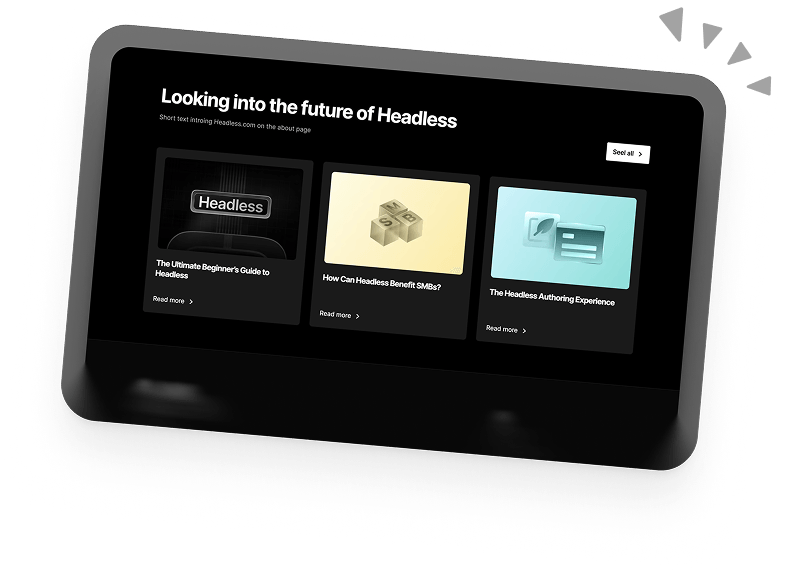An Introduction to Sustainability in UX Design

Environmental concerns are shaping our current society. We are facing problems of existential proportions as we reap the rewards of centuries of pollution: natural disasters, failed crops, air pollution, the list goes on and it makes for depressing reading.
It’s clear that changes need to be made in every sector. But how does UX Design fit into the equation? And how can user experiences contribute to a more sustainable future?
In this article, we’ll explore two central aspects to making UX more sustainable: making work more energy efficient, and enabling sustainability through experiences.
How can UX Design be more energy-efficient?
Building digital products uses vast amounts of energy. If the internet was a country, it would be the 7th most polluting country in the world.
So, the most obvious change to make for sustainable UX design is to reduce the amount of energy consumption. But how do we achieve this?
The good news is that you’re probably already doing it.
Building modern digital experiences is all about efficiency. Designers and marketers pour blood, sweat, and tears into shaving seconds off of page load times and tweaking their content to be relevant and discoverable to Google’s bots.
All these things you’re doing to make your sites more efficient for users are actually contributing to reducing the internet’s energy consumption.
- Lightweight code cuts down on CPU usage.
- Organised information architecture means less time wasted by users getting lost on your site.
- Similarly, SEO prioritises relevant content. So, people are finding what they’re looking for and they’re finding it faster.
But what about the experiences themselves?
Here’s where it gets interesting.
UX design is dependent on the desires and attitudes of the users.
Users are more aware than ever of the environmental, social, and economic problems facing them. As such, they have become more conscientious as consumers. Increasingly, there is a demand for brands to be socially responsible. To understand how user experiences can contribute to a more sustainable society, we must first look at user expectations.
User expectations have evolved
Priorities have shifted away from traditional aspirations of money and status. People want to live more harmoniously with each other and with the planet and this is greatly affecting consumer behaviour.
Sustainable Brands undertook a 3-year study called Enabling The Good Life to assess people’s relationships with brands and what people believe constitutes a “good life”.
According to the study, the number one priority was “Balanced Simplicity” (36%), followed by “Meaningful Connections” with people, community, and the environment (28%).
And people want brands to help them live in this balanced and connected way.
The study found that the majority of people are loyal to brands that help them live their idea of a “good life” and 51% said they could “sense that companies would like to help them live the life they seek”. Contrastingly, 65% said they could not name a brand that was actively doing that.
To respond to these changes in consumer behaviour, companies must focus on delivering experiences that have a positive impact on users.
Humanity-centric experiences
This is where sustainability in UX becomes truly powerful and important: when we tailor experiences to improve people’s lives. I know it sounds grandiose, but just bear with me, okay?
User experiences need to move from being merely user-centric to being humanity-centric.
Focusing on providing the user with an easy, enjoyable experience isn’t always conducive to sustainability. Throughout the better part of the 21st century, there has been an explosion of popularity for digital products. This has resulted in a highly competitive space, with companies battling for user’s attention, each trying to one-up the other with more engaging experiences.
Think of social media platforms. They are meticulously crafted experiences designed to keep users engaged, happy, and entertained. And they do this through various addictive design choices. This might technically be a “good user experience” but it can lead to negative effects on the user.
Humanity-centric experiences, on the other hand, are tailored to understanding the needs of an individual as well as the long-term impact on the communities and ecosystems surrounding that individual.
And now companies are adapting to create more holistic, humanity-centric experiences.
Mindful Design
Take Apple, for example. They introduced a feature called Screen Time that allows users to monitor and limit their use on certain apps or websites. This is an example of Mindful Design. This type of design helps users to be more aware of their behaviours, in turn, helping them make healthier choices.
Mindful design is being used by various companies to encourage more sustainable behaviours from their users. For example, some energy providers let you track where and when you’re using the most energy in your home. Delivery companies will also give you the option to have a parcel sent to a locker instead of your home to reduce your carbon footprint.
Mindful design can be implemented across many different applications. But there’s a fine line with implementing mindfulness.
The idea is to help users change behaviours and patterns. To do this, you need to make it easy to access the function, simple to use, and most importantly, think carefully about the psychology of the design choice. Trying too hard to influence behaviours can result in essentially shaming the user.
Designing choices
Another example of sustainability-oriented design that’s popped up in the past few years is the companies adding optional charity donations at the checkout. These features often implement something called “Nudge Theory”.
Nudge Theory concerns the way we design choices for users.
You still give them a choice, but present one of the choices in a way that makes it more appealing. This nudges them towards that option.
In digital design, you’ll often see this implemented by changing the colour of a button. The desired option might be coloured green and the other grey. Rationally, it should give no extra credence to that option, but instinctively we are more likely to click on the colourful button than the grey one.

Nudges can be extremely useful. For example, when you exit a document without saving a notification pops up and the option to save the document is highlighted.
An example of using nudges to incentivise sustainable behaviour can be seen in self-service checkouts and digital checkouts which encourage people to donate to charity. By styling the “Donate” button in a colourful way and leaving the other buttons bland, it creates an instinctive psychological incentive to click on it.
These design elements obviously aren’t sustainable in their own right. (not in the traditional sense anyway) But with the amount of influence wielded by digital brands and experiences, there is an expectation that they will take greater consideration of their social responsibility. And of course, given how user experiences can affect behaviours in thousands of different people, you are still contributing significantly towards a more sustainable future.
Sincerity is key
Obviously, doing the right (sustainable) thing for the wrong (financial) reasons is slightly better than just doing the wrong thing. But truly sustainable experience design should come from a place of authenticity. This is for two reasons:
- Half-hearted commitments lead to ineffective solutions
- Audiences will perceive inauthenticity
As a Forbes article put it: “millennials are the first generation to become jaded about the fact that most marketing is wholly self-interested”. Brands are notorious for half-hearted attempts at involvement in social causes. Remember the Kendall Jenner Pepsi ad? Yeah, that one went down well, didn’t it?
So, if you sincerely care about building a sustainable future, it’s important to show this through meaningful design choices. Remember, actions speak louder than words.
In UX design, you must never lose sight of the user. Only, now, paradoxically, the user doesn’t want to be the centre of attention.
Book a 30-min Introduction Call
Let's jump on a quick intro call We'll break down your project, and pinpoint exactly how we can help.



Our clients  Holaa! love working with us see their stories below!
Holaa! love working with us see their stories below!






